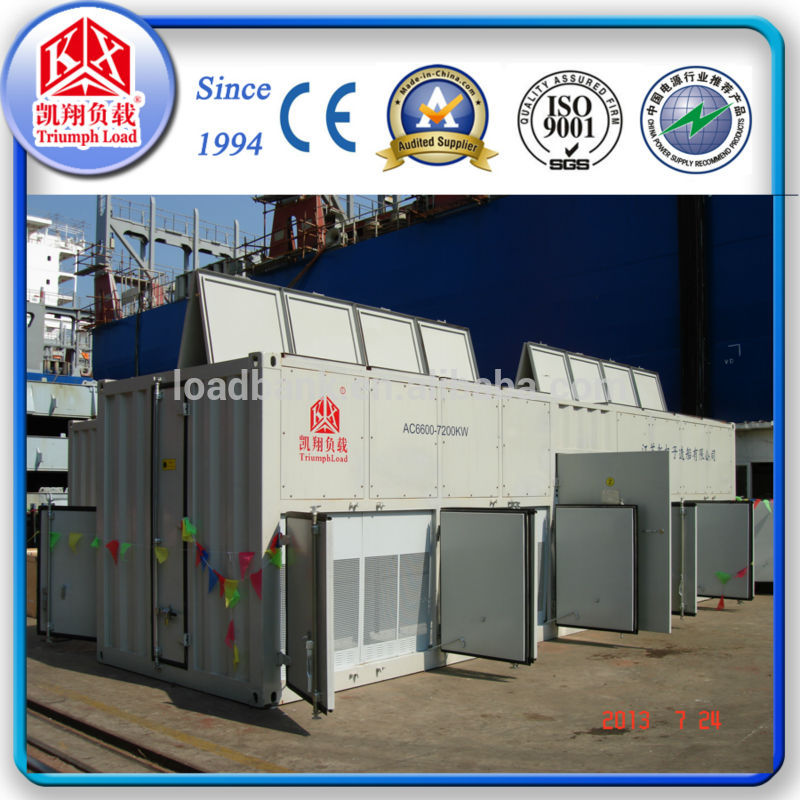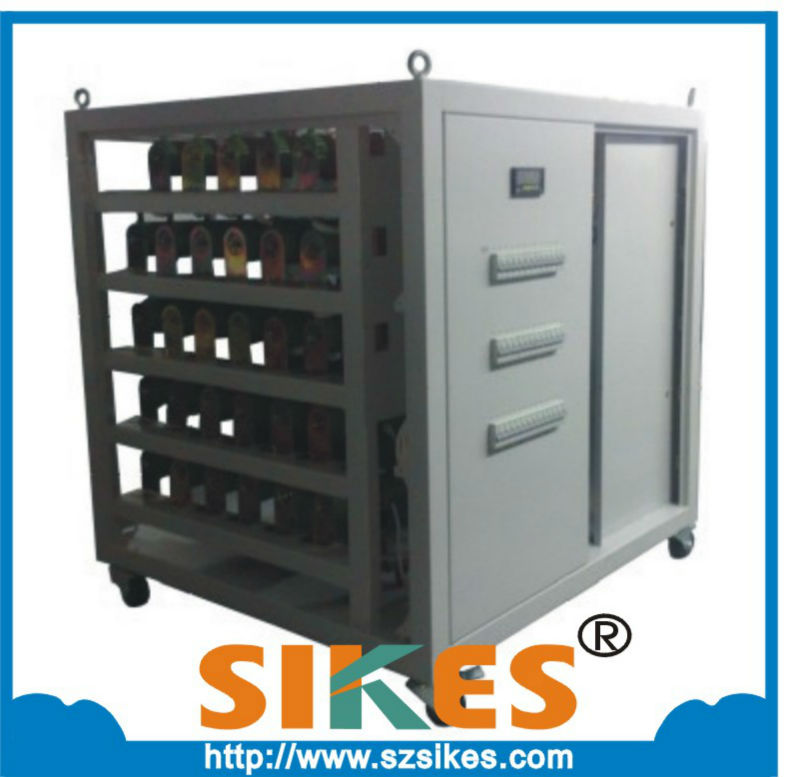A load bank is a device which develops an electrical load, applies the load to an electrical power source and converts or dissipates the resultant power output of the source.
The purpose of a load bank is to accurately mimic the operational or “real†load that a power source will see in actual application. However, unlike the “real†load, which is likely to be dispersed, unpredictable and random in value, a load bank provides a contained, organized and fully controllable load.
Consequently, a load bank can be further defined as a self-contained, unitized, systematic device that includes load elements with control and accessory devices required for operation.
Whereas the “real†load is served by the power source and uses the energy output of the source for some productive purpose, the load bank serves the power source, using its energy output to test, support or protect the power source.
Applications
Benefits of Generator Load Banking - Learn how running your standby generator under full load using a temporary load bank can ensure your power system will perform properly in an emergency.
Load banks are used in a variety of applications, including:
- Factory testing of turbines and engine diesel generator sets
- Reduction of wet stacking problems
- Periodic exercising of stand-by engine generator sets
- Battery and UPS system testing
- Ground power testing
- Load optimization in prime power applications
- Removal of carbon build-up on piston rings
- Load rejection test
Load bank types

The three most common types of load banks are resistive, inductive, and capacitive. Both inductive and capacitive loads create what is known as reactance in an AC circuit. Reactance is a circuit element's opposition to an alternating current, caused by the buildup of electric or magnetic fields in the element due to the current and is the "imaginary" component of impedance, or the resistance to AC signals at a certain frequency. Capacitive reactance is equal to 1/(2⋅π⋅f⋅C), and inductive reactance is equal to 2⋅π⋅f⋅L. The unit of reactance is the ohm. Inductive reactance resists the change to current, causing the circuit current to lag voltage. Capacitive reactance resists the change to voltage, causing the circuit current to lead voltage.
Resistive load bank
A resistive load bank, the most common type, provides equivalent loading for both generators and prime movers. That is, for each kilowatt (or horsepower) of load applied to the generator by the load bank, an equal amount of load is applied to the prime mover by the generator. A resistive load bank, therefore, removes energy from the complete system: load bank from generatorâ€"generator from prime moverâ€"prime mover from fuel. Additional energy is removed as a consequence of resistive load bank operation: waste heat from coolant, exhaust and generator losses and energy consumed by accessory devices. A resistive load bank impacts upon all aspects of a generating system.
The load of a resistive load bank is created by the conversion of electrical energy to heat via high-power resistors such as grid resistors. This heat must be dissipated from the load bank, either by air or by water, by forced means or convection.
In a testing system, a resistive load simulates real-life resistive loads, such as incandescent lighting and heating loads as well as the resistive or unity power factor component of magnetic (motors, transformers) loads.
The most common type uses wire resistance, usually with fan cooling, and this type is often portable and moved from generator to generator for test purposes. Sometimes a load of this type is built into a building, but this is unusual.
Rarely a salt water rheostat is used. It can be readily improvised, which makes it useful in remote locations.
Inductive load bank
An inductive load includes inductive (lagging power factor) loads.
An inductive load consists of an iron-core reactive element which, when used in conjunction with a resistive load bank, creates a lagging power factor load. Typically, the inductive load will be rated at a numeric value 75% that of the corresponding resistive load such that when applied together a resultant 0.8 power factor load is provided. That is to say, for each 100Â kW of resistive load, 75 kVAr of inductive load is provided. Other ratios are possible to obtain other power factor ratings. An inductive load is used to simulate a real-life mixed commercial loads consisting of lighting, heating, motors, transformers, etc. With a resistive-inductive load bank, full power system testing is possible, because the provided impedance supplies currents out of phase with voltage and allows for performance evaluation of generators, voltage regulators, load tap changers, conductors, switchgear and other equipment.
Capacitive load bank
A capacitive load bank or capacitor bank is similar to an inductive load bank in rating and purpose, except leading power factor loads are created, so reactive power is supplied from these loads to the system, hence improves the power factor. These loads simulate certain electronic or non-linear loads typical of telecommunications, computer or UPS industries.
Electronic load bank
An electronic load bank tends to be a fully programmable, air-or water-cooled design used to simulate a solid state load and to provide constant power and current loading on circuits for precision testing.
Railways

Where a diesel-electric locomotive is equipped for dynamic braking, the braking resistor may be used as a load bank for testing the engine-generator set.
See also

- Dummy load
- Relative cost of electricity generated by different sources
- Diesel-electric transmission
- Motor-generator
- Three-phase electric power
- Regenerative braking
References



Nice Blog....Informative Information......Thanks for sharing useful information...Inverter RLC Load Bank is anti-islanding preventative test experiments. Which is used for Inverter.
ReplyDeleteI am learned more thing of your website Thanks for sharing this Excellent quotes the Partisanship may be very sturdy through the kingdom, in reality, it has had our government close down for the past week.
ReplyDeletegerman shepherd dog price
I am learned more thing of your website Thanks for sharing this Excellent quotes the Partisanship may be very sturdy through the kingdom, in reality, it has had our government close down for the past week.
ReplyDeleteजर्मन शेफर्ड की कीमत